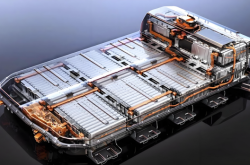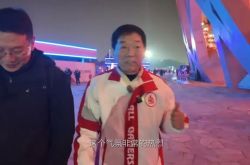Huawei's Most Pragmatic Path Forward
![]() 11/17 2025
11/17 2025
![]() 550
550
Huawei Cloud stands at a pivotal crossroads, necessitating a thorough reevaluation of its strategic direction and operational tempo.
In the past six months, Huawei Cloud has weathered unprecedented turbulence: unresolved model controversies, a series of executive demotions, sluggish revenue growth, and frequent organizational reshuffles.
These developments underscore a stark reality: in the era where AI is reshaping cloud computing paradigms, Huawei Cloud's competitiveness in the public cloud arena significantly trails behind internet-native players like Alibaba Cloud and Volcano Engine.
This trend is starkly evident in the data. In 2024, Huawei Cloud's annual revenue reached RMB 38.523 billion, marking a modest 8.5% year-on-year increase. In contrast, Alibaba Cloud reported a revenue of RMB 118 billion for the fiscal year 2025, up 11% year-on-year. Furthermore, Key Takeaways indicates that Volcano Engine's revenue surpassed RMB 12 billion in 2024, growing by over 60%, with a 2025 revenue target exceeding RMB 25 billion and a projected growth rate of over 100%.
The root cause lies in Huawei Cloud's failure to cultivate core competencies tailored for public cloud competition.
In the AI-driven landscape, where a "developer ecosystem + agile productization" model acts as the growth engine, Huawei Cloud has consistently lagged in rapid product iteration, user-centric organizational structures, and sustainable ecosystem management.
Its challenges transcend individual or team performance, deeply rooted in its origins and strategic path. In a market-driven competitive landscape, an organization adept at systematic engineering and top-down execution struggles to excel in a battlefield reliant on developer ecosystems and rapid innovation cycles.
However, this predicament is not necessarily detrimental.
It offers Huawei Cloud a potential window for strategic realignment: gradually exiting the public cloud race and reallocating resources towards areas like chip development, which promise long-term accumulation and technological differentiation.
If successful, this move would not merely represent a business adjustment for Huawei but a reaffirmation of its strategic boundaries: voluntarily stepping back from a fiercely contested market to leverage its core engineering strengths, thereby redefining its role in the AI infrastructure era.
/ 01 / Huawei Cloud's 2025: A Turbulent Year
The past six months have been anything but smooth for Huawei Cloud.
In July, a researcher published a report on GitHub, alleging that Huawei's Pangu Pro MoE model exhibited a 0.927 similarity in attention layer parameters with Alibaba's Qwen-2.5 14B through "model fingerprinting" comparisons, far exceeding the industry's 0.7 threshold. Some modules even showed layer-by-layer replication.
More controversially, the open-source code of the Pangu model retained traces of "Copyright 2024 Alibaba Group."
Following the escalation of the incident, Huawei swiftly adjusted its cloud computing strategy. In August, Huawei Cloud underwent organizational optimization, impacting thousands of employees. The most notable change was the dissolution of the "Model Customization and Delivery Team" under the Cloud EI (Enterprise Intelligence) product line, responsible for commercializing the Pangu model.
This marked Huawei's first strategic retreat in model-related businesses post-controversy.
Since June, Huawei has refrained from releasing new models until October, when it open-sourced openPangu-Ultra-MoE-718B-V1.1. Compared to Alibaba's Tongyi, ByteDance's Doubao, and even DeepSeek's bi-monthly updates, Huawei's model release pace has significantly slowed.
Meanwhile, Huawei has tightened internal governance within its cloud computing division.
On October 18, Huawei's Disciplinary Committee issued penalties for data fabrication and economic fraud within the cloud business, sanctioning several responsible individuals.
Notably, Huawei Cloud CEO Zhang Ping'an was demoted three levels and issued a severe warning, dropping from Level 22a to 21a in Huawei's hierarchy, an extremely rare disciplinary action for a senior executive.
Also penalized were Zhang Yuxin, Head of Huawei Cloud Service Products; Shi Jilin, Global Sales and Services Leader; and Kang Ning, Ecosystem Leader, all demoted two levels for management lapses.
This "mass demotion" incident drew significant external attention, highlighting not just a risk control failure or individual accountability but a structural dilemma in the new technological cycle.
Today, as AI reshapes the cloud computing landscape, Huawei Cloud increasingly struggles to compete with internet-native players like Alibaba Cloud and Volcano Engine.
This is not due to a lack of technical prowess but because Huawei has followed a fundamentally different path. Huawei excels in engineering systems rather than developer ecosystems, favoring top-down delivery rhythms over market-driven product iterations.
To some extent, Huawei Cloud's current predicament was predetermined by its origins. Its path has shaped its organizational approach and technological choices, constraining its position in the new industrial restructuring.
/ 02 / Engineering DNA Faces Cloud Computing Challenges
From its inception, Huawei Cloud's positioning has been strongly "self-contained." To be precise, it represents an extension of Huawei's hardware business into a new commercial environment, rather than a product defined by user needs.
Historically, Huawei has thrived by selling servers, switches, storage, and other complete systems, forming a closed commercial loop. However, as enterprises transitioned from "buying equipment" to "renting clouds," this model faced significant challenges.
To alleviate shipping pressures, Huawei decided to build its own cloud, installing its equipment in data centers and packaging computing power, storage, and networking into "services" for sale.
This reflects a typical inside-out (reverse-driven) mindset: defining products based on internal capabilities rather than customer problems, seeking a new market outlet.
This path has also influenced Huawei Cloud's subsequent platform and ecosystem development, with lasting effects. Huawei Cloud excels in building and delivering underlying IaaS resources, performing well in government, enterprise, and energy sectors that prioritize stability. However, its performance in PaaS and SaaS layers has consistently been lackluster.
This is closely tied to its organizational culture. Huawei is a quintessential engineering-driven company, characterized by annual strategic rhythms, layered goal decomposition, rigorous organizational processes, and expertise in large-scale, delivery-oriented, resource-intensive projects.
This mechanism is highly efficient in customized To G (Government) and To B (Business) projects but lacks flexibility when facing public cloud users like small-to-medium developers and startups, who demand rapid response and elastic resources.
For instance, in traditional IT models, enterprises must pre-plan network resources such as bandwidth, IP segments, and QoS before launching systems. In contrast, in the public cloud realm, customer demands are real-time and highly elastic. Even at 1 AM, a sudden request might require doubling network capacity, adding new IP segments, and going live immediately.
Such instant elasticity demands pose challenges to Huawei's original plan-driven capability system.
Industry insiders reveal that Huawei has long been "struggling" with network resource scheduling, even recruiting IaaS platform engineers from Alibaba Cloud, Tencent Cloud, and others because "the original system was too engineering-focused, with a static scheduling mechanism that couldn't keep up with elasticity needs."
These localized reinforcements may offer short-term solutions but cannot fundamentally alleviate deeper structural misalignments. Entering the AI era, this misalignment has further widened, especially in the three key elements determining AI platform competitiveness: data, algorithms, and ecosystem.
First, data. In the large model era, data competition is no longer about "storing more" or "computing faster" but about possessing high-quality corpora closest to real-world business scenarios.
Alibaba Cloud leverages multiple business lines like e-commerce, advertising, and logistics, boasting vast user behavior data. Tencent Cloud relies on social and content platforms, accumulating rich multimodal materials such as dialogues, images, and audiovisual content. These native internet scenarios form natural data closures, giving them an edge in model capabilities and productization paths.
In contrast, Huawei Cloud lacks similar native internet application scenarios, making it difficult to acquire high-quality corpora and labeled data for model training.
Algorithms and talent represent another insurmountable gap. AI research heavily relies on talent density and global collaboration capabilities. However, since being placed on the "Entity List" in 2019, Huawei's global recruitment and academic cooperation have faced significant restrictions.
Universities and labs in AI research hubs like the U.S., Europe, and Canada remain cautious about collaborating with Huawei. Overseas talent, considering visa, compliance, and reputation concerns, adopt a wait-and-see attitude toward joining Huawei.
This makes it difficult for Huawei to systematically introduce top AI algorithm researchers on a global scale, further widening the gap with companies like Alibaba and ByteDance.
Ecosystem challenges are even more fundamental. Currently, the mainstream technical stack for AI training and inference is almost entirely built on NVIDIA GPUs and their development framework, CUDA. From mainstream frameworks like PyTorch, TensorFlow, and JAX to underlying hardware instructions, CUDA has become the de facto AI programming standard, supported by a vast developer ecosystem and community.
However, constrained by U.S. sanctions, Huawei cannot procure NVIDIA's high-performance GPUs and must rely on its self-developed Ascend chips, building its AI development system—the CANN architecture—from scratch.
This means rebuilding an entire chain, from compilers, framework adaptation, and inference optimization to scheduling mechanisms, while attracting developers to adapt algorithm models specifically for it—an exceptionally difficult task for any vendor.
From this perspective, Huawei Cloud's current predicament cannot be entirely attributed to insufficient capabilities. It stems from both external environmental constraints and limitations of its organizational inertia and engineering system. As AI becomes the growth engine for cloud platforms, these seemingly "slow" gaps are rapidly widening.
/ 03 / It's Time for Huawei to Embrace Its Core Strengths
The public cloud dilemma may not be a detriment to Huawei.
In investing, the term "signal-to-noise ratio" refers to extracting valuable insights from redundant information. The same principle applies to corporate strategy.
Business decisions often occur in environments where "noise outweighs signals." The more complex the system and the more options available, the easier it is for companies to fall into the inertia of "doing something." Action brings psychological security, while inaction implies uncertainty, doubt, and waiting. However, what truly matters is not doing more but identifying the most worthwhile direction to invest in.
Such opportunities for reevaluation often emerge only during "low tides."
When Steve Jobs returned to Apple, the company was on the brink of bankruptcy. In previous years, Apple had drowned in product line expansion: Newton PDA, Pippin game console, printers, licensed machines... Resources were scattered, directions confused, and even its core Mac products lost competitiveness due to outdated designs.
Jobs' first move was to cut 70% of the products. He drew a four-quadrant chart on a whiteboard, narrowing the entire product line to four directions: consumer and professional desktops and notebooks. "Our job is not to please everyone but to make a few great products," he said. This remains a fundamental strategic coordinate for Apple today.
Huawei may be at a similar crossroads. Over the years, it has accumulated solid engineering capabilities in telecommunications, chips, and terminals. However, the public cloud line increasingly resembles a structurally mismatched option, overconsuming organizational resources while failing to establish sustainable competitive advantages.
In contrast, chips and computing power represent clearer and more proactive directions for Huawei. According to IDC data, by 2024, Huawei's market share in China's AI chip sector had reached 23%, second only to NVIDIA.
Currently, domestic chips are experiencing a wave of listings. Moore Threads and MetaX have passed the Science and Technology Innovation Board's listing committee review, while Biren Technology and Lixuan Technology are in the queue.
However, from the supply side, the number of manufacturers with stable mass production capabilities capable of truly serving top-tier clients remains limited. For Huawei, this may be a rare opportunity window created by external environments, allowing it to establish a more robust AI computing power barrier while the landscape is still unsettled.
Abandoning public clouds to focus on chips is not just an opportunity to pursue more certain growth but a strategic choice to return to its engineering roots and redefine its market role.
Over the past two years, NVIDIA's tenfold stock price increase has proven one thing: in this AI race driven by models and priced by computing power, the true value anchor lies not in application-layer changes but in underlying computing power supply.
Now may be the time for Huawei to return to where it excels.
Written by Lin Bai







